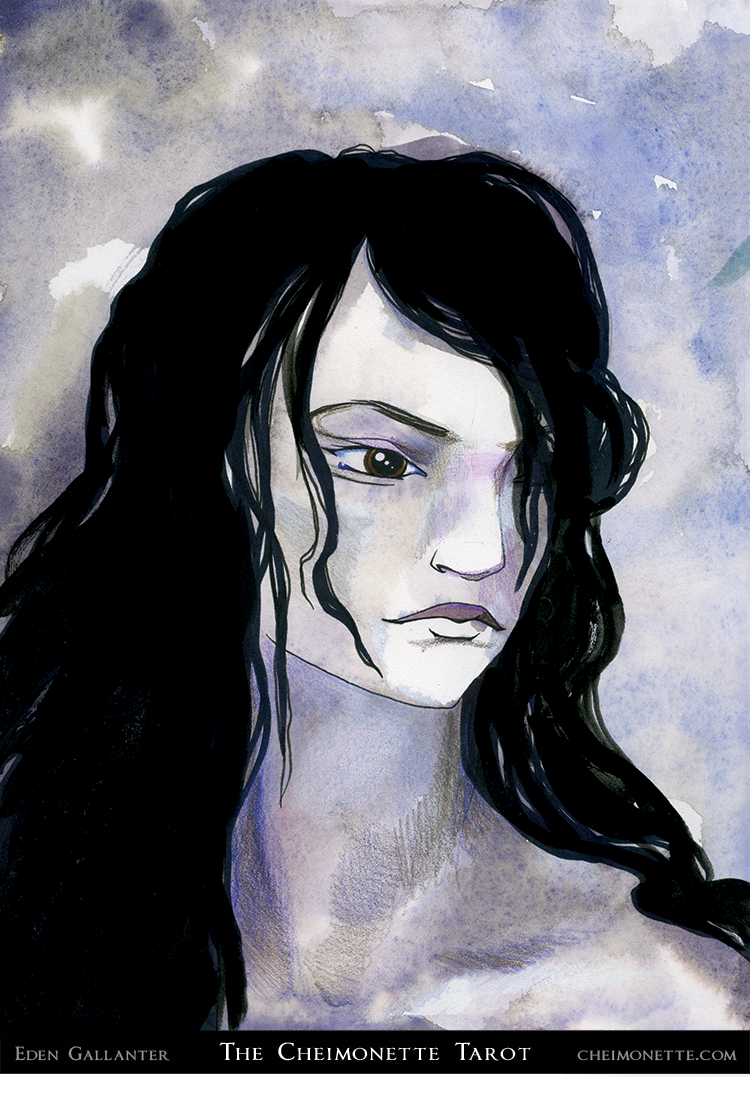Ada and the Queen of Swords
"'What on earth is an artist?' 'An underground observatory,' said Van promptly."
-Vladimir Nabakov, Ada
A long time ago, when I was an undergrad, upon swimming for the first time in a vast sea of literature of my own choosing, I was just awakening from the deep, trance-like existence you get into when you find a really, really good book and can't stop reading and re-reading it, the kind of book you wish would never end at all. At that time, my Book-to-End-All-Books was the immortal Ralph Ellison's Invisible Man. I had read, at that point, Ellison's book about ten times straight through, and I still don't know how many times I read that beginning and ending (it still gives me the shivers just thinking about it, Ellison's character in his illuminated cave, writing from a place outside the world, lonely but powerful, ending with his terrifying line, "Who knows but that, on the lower frequencies, I speak for you?") I was winding down, in a frenzy of African American history books, jazz music, and poetry, looking desperately for another work of fiction, when a friend, from whom I was slowly and painfully learning how to be cool, told me about Vladimir Nabokov's Lolita.
I read it, was impressed with the language but mildly bored and a little sickened by the story, and began casting about to read more of Nabakov's brilliant, self-conscious and bravely egotistical writing. Then I found his Ada or Ardour: A Family Chronicle, a love-story complicated by incest. The characters were spoiled, brilliant, and ridiculously self-important, even for main characters. Like Van Veen, the book's number-one narrator, I fell in love with Ada. Not that she was particularly likeable or even admirable—her brilliance never consolidated into anything more substantial than a string of sad love affairs, though she tried hard to be an actress. One might have watched with interest from afar, but I hardly think that either of them would be tolerable in real life. It is not necessary to like that which you love.
But she was so real. Her self-importance merely reflected my own, buried under yards of empathy and self-doubt. She was a tragic figure, living in a world that did not see her and could not accept what she had to give. Neither Ada, nor her brother-paramour, Van (nor, I suspect, even the great and all-seeing author himself) seemed to have any idea why this should be so, and the book's plot tossed among the flotsam of a deteriorating world, its characters saddened to find themselves lost anonymously in a landscape over which they had expected to someday rule.
Says Van (always a foil for Ada, always her more legible spokesperson, always her other self): “Maybe the only thing that hints at a sense of Time is rhythm; not the recurrent beats of the rhythm but the gap between two such beats, the gray gap between black beats: the Tender Interval.” Ada herself dwells in that gap, belonging no place and every place, and without any metric by which to judge her shape, her size, or her place in the world.
So it is not surprising to me that when I painted my Queen of Swords, it was Ada. In tarot, queens, kings, princes, and princesses ("pages" in some decks) are sixteen distinct personalities, and may represent real people, communities, ourselves, or that "dream of ourselves" with which we do daily battle.
The Queen of Swords is at once cold and tender. She is cold because she knows herself to be the brilliant, insightful, and capable person she is, and is in so many respects immune to need and desire, because she already has everything. She is tender because she has never known an existence without her riches, and therefore has no name for the blind, yearning, half-formed girl inside of her. In many ways, her only desire is for herself. Looked at another way, her desire to share her glut of blessings with the world (a desire which has not yet taken the shape of interest in the lives of other people, only a feeling of emptiness where this interest ought to be) makes her irrepressably sad. She looks down at the world, feeling powerful and yet alone, permeated by all the knowledge and experience of the whole world and yet weak with the hunger for human experience and fellowship.
Like Nabakov's Ada, the Queen is proud but bewildered; self-worth is not confidence. She thinks well of herself and her abilities (as well as her ability to give), but she finds no one who recognizes her in the world outside. Her dream of herself does not match how others see her, and she withdraws, confused and hurt, far beneath her skin and into her internal landscape, where no one can ever find her.
This post is part of a series about my deck, the Cheimonette Tarot.
